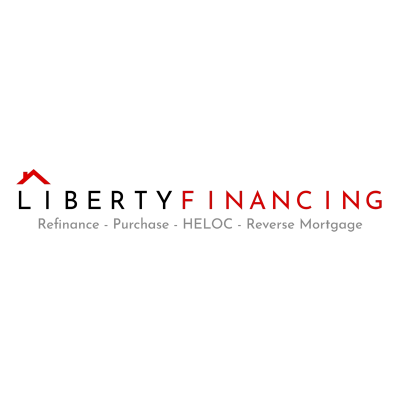7 Changes to Your Credit Utilization Approach After Achieving Credit Goals
Credit utilization plays a crucial role in maintaining a healthy financial profile, even after reaching your credit score goals. This article explores expert-backed strategies for managing credit utilization to preserve and potentially improve your credit standing. From maintaining low balances to diversifying your credit mix, these insights will help you navigate the complexities of credit management in the long term.
- Maintain Low Balances for Stable Scores
- Strategic Utilization Boosts Financial Opportunities
- Year-Round Low Utilization Preserves Credit Score
- Automate Payments to Optimize Credit Utilization
- Request Higher Limits to Lower Utilization
- Diversify Credit Mix for Better Management
- Monitor All Accounts for Optimal Utilization
Maintain Low Balances for Stable Scores
My view shifted quite a bit once I hit the credit score I'd been working toward. At first, I figured as long as I paid my bill on time, I was doing everything right. But after hitting that goal and wanting to maintain it, I started paying more attention to how much of my available credit I was actually using throughout the month.
I learned that keeping my balances low not just at the due date, but all the time made a big difference in how stable my score stayed. Now, I space out big purchases and even make early payments sometimes just to keep my usage ratio down. It's a small change in habit that's helped me keep my score strong without much extra effort!

Strategic Utilization Boosts Financial Opportunities
Reaching a specific credit score goal significantly shifted my perspective on credit utilization. Initially, I viewed credit utilization as simply keeping my spending below 30% of my credit limit, which is generally recommended. However, as I approached and surpassed a credit score of 750, I realized the nuances of credit utilization and its importance in maintaining and even boosting my credit score further. It became clear that lowering my credit utilization even more, to below 10%, had a significant positive impact on my credit health.
From this experience, I learned that being strategic about credit utilization not only helps in managing debts more effectively but also optimizes credit scores. Implementing this strategy, I began spreading charges across multiple cards and paying off balances before the billing cycle ended, further reducing my utilization ratio. This practice led to noticeable improvements in my credit score, which were beneficial when applying for a mortgage with favorable interest rates. The lesson was clear: thoughtful management of credit utilization goes a long way in securing financial stability and unlocking better financial opportunities. Keep an eye on your credit utilization, adjust as necessary, and watch how it can transform your financial landscape.

Year-Round Low Utilization Preserves Credit Score
After reaching credit goals, maintaining a consistently low utilization throughout the year becomes crucial. This approach helps in preserving the hard-earned credit score. It involves carefully monitoring spending habits and keeping credit card balances low relative to credit limits. By doing so, individuals demonstrate responsible credit management to lenders.
This strategy can lead to more favorable terms on future credit applications. Maintaining low utilization also provides a buffer for unexpected expenses. Take charge of your credit health by aiming for year-round low utilization.
Automate Payments to Optimize Credit Utilization
Implementing automated payments can optimize the timing of credit utilization. This method ensures that card balances are paid down before they are reported to credit bureaus. By setting up automatic payments, individuals can maintain lower utilization rates without constant manual intervention.
This approach can lead to more consistent and potentially higher credit scores over time. It also reduces the risk of missing payments, which is another crucial factor in credit scoring. Embrace the power of technology to streamline your credit management process.
Request Higher Limits to Lower Utilization
Strategically requesting credit limit increases can be a valuable tool in managing utilization. By periodically seeking higher limits, individuals can lower their overall utilization ratio without changing their spending habits. This approach requires careful timing and consideration of each lender's policies.
It's important to note that some credit limit increase requests may result in hard inquiries on credit reports. However, the potential long-term benefits often outweigh this temporary impact. Take initiative in shaping your credit profile by thoughtfully requesting limit increases.
Diversify Credit Mix for Better Management
Diversifying credit mix can lead to improved overall utilization management. This strategy involves using different types of credit, such as revolving accounts and installment loans. A diverse credit portfolio can demonstrate to lenders an ability to handle various financial responsibilities. It may also provide more flexibility in managing overall credit utilization.
However, it's crucial to only take on new credit when necessary and manageable. Diversification should be approached thoughtfully and gradually. Consider exploring different credit options to enhance your credit profile.
Monitor All Accounts for Optimal Utilization
Monitoring and adjusting utilization across all accounts is a holistic approach to credit management. This method involves regularly checking balances on all credit cards and loans. By viewing credit accounts as an interconnected system, individuals can make informed decisions about where to allocate payments or spending.
This strategy may involve shifting balances between accounts to optimize overall utilization. It requires ongoing attention but can lead to more stable and potentially higher credit scores. Start viewing your credit accounts as a unified system to maximize your credit health.

